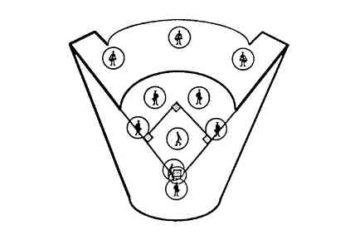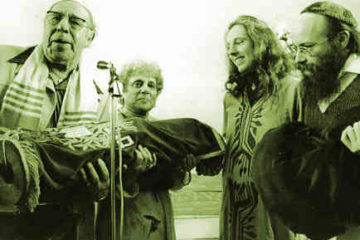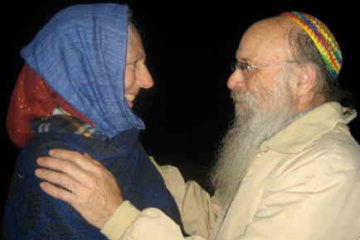During my previous visits to Israel, and since the time I have begun living here as a new immigrant, I have met many remarkable people who have dedicated themselves to working for positive change – within themselves, between people, and between people and the land. For this series of articles I have asked some of these people to sit down with me and describe their backgrounds, beliefs, and current projects.
The first person I called was Marcia Kreisel. Marcia is a vibrant woman in her 60s whom I first met at a Tu b’Shvat Seder a little over a year ago. She is an organizer of dialogue groups–structured meetings between Arabs and Jews–which she and her partners refer to as “reconciliation work.” Aside from this volunteer commitment, she is a therapist in private practice, specializing in “Inner Child” work. “It is psycho-spiritual work,” she says, which evokes “the wounded child within, and it’s very real for people. I do guided visualizations with people, which enable these people to contact these parts of themselves. They actually see this child that’s there that’s still crying and still angry…. It stays stuck in that place…until you touch it and start healing it.”
However, when I asked her if she used these visualizations in the dialogue groups, she drew a clear line between the two healing modalities. “I don’t use therapy, no. I don’t think it’s effective. It’s more a part of my way of looking at life and the way that I relate to people because it makes it very easy to see human beings as human beings.”
Marcia radiates patience and compassion as she speaks. She explains, “I have seen men who have beaten their wives and their children, and in seeing their inner child, I’ve been able to see them as suffering human beings and not as evil.”
Marcia notes, “It is important for people to know that I am involved in kabbalistic studies and also in Buddhism, and I’m an ancient Zionist (laughing), and that I am looking for a way to do spiritual peace work. When you say ‘spiritual,’ what it means to me is that it isn’t divisive. This means that…the suffering of every person involved is equally important. In that case there are no good people and no bad people; there are only people who are suffering from the conflict itself.”
Her first engagement with reconciliation work began in 1991, in the midst of the first Intifada, after her return from a round-the-world journey. She began making regular visits to Nablus, the ancient Shchem, where she brought groups of Israelis to assist in the physical and emotional rehabilitation of Palestinians, some of whom had been traumatized by their incarceration in Israeli jails. She found that Reiki, a form of hands-on healing that originated in Japan, was extremely helpful. She, her Palestinian colleague, Rawda Basir, and other co-workers received initiation from a Reiki Master and subsequently introduced other participants to the technique.
Later, she met a Buddhist teacher from England, Christopher Titmuss, who asked if she had ever thought of doing a dialogue group based on the transformation of suffering. She responded, “I’d love to do something like that if you would come and teach us.” He agreed to come, and Rawda agreed that she and Marcia would organize it together.
Thirty people, fifteen from each side of the ethno-religious divide, were invited to participate. “It changed a lot of people’s lives,” Marcia recalls, with glowing assurance. “It was so amazing. And all it was – all it was – was listening to each other’s suffering that was connected to the conflict, realizing fully and deeply that everybody is suffering terribly, and when Israelis see the Palestinians, and see their suffering – it’s human beings’ suffering – they can’t stand it! And when Palestinians see the Israelis’ suffering – it’s unbearable! As a result of the dialogue, we realize that we love each other, we care about each other’s suffering. It’s the conflict that’s the problem. It isn’t us! We have to find a way to end the conflict…. We don’t need to hate each other; we don’t need to fear each other; we can find a way to live in peace.”
Her understanding of the psycho-dynamics of human conflict explains her confidence in the methodology she and her partners have developed. She analyzes a typical reaction to having been victimized by noting, “It’s always, in any person…an emotional, unconscious reaction, and there is this place in humans, and I think more in men than in women…a fear and a despising of being weak. The whole thing of a man feeling that he’s weak and powerless is something that feels unbearable. And in situations where you are led to believe – that you really, truly believe – that somebody is your enemy, and that he could be dangerous to you…then there will be an inner permission to feel yourself as being very strong and very righteous, and destroying that other person’s strength and making him the weak one” will seem legitimate.
“People who have been victims or are afraid of being victims – and this is part of our Jewish experience…will then believe that there are only two roles in life that you can fill. They will be either the person who is being victimized or the victimizer. They will be either the aggressor or the victim…. And there isn’t the place of being the reconciliator, of being the person who finds the middle way…it doesn’t exist in that kind of emotional dynamic.”
What is the key? “Looking for the human-ness in the other instead of looking for where the enemy is, not wanting to be the victim. If we divide people into enemies and victims, then we’re lost. If we’re able to see every person as a human being, then we’re found!”
The success of the dialogue work has led Marcia and her colleagues to plan the formation of a Peace School, composed of bands of teachers who will go where they are needed, to conduct, for example, anger transformation workshops and other types of facilitation that will establish human ties and reduce conflict.
Marcia is convinced that “the ordinary person, a human being, just like an Israeli, an American, an Palestinian, wants to lead a normal life. He wants to be able to get married, to build a house, to have children, and for those children to be secure–this is what ordinary people want, everywhere.”
And her own motivation? “I’m very Jewish, and it is my intention, in wisdom that I gather from anywhere, whether from Buddhism or Judaism, is to help to lessen the suffering of the Jewish people.” I ask her if she thinks the Jewish people have some special role to play. She replies, “They’re my people. They’re like my family. I love all people. But it’s my family, and they’re suffering, and I feel that they’re in trouble, and anything that I have I want to give to them.”
One of her gifts is this poem, which she both wrote and set to music:
I will call no man my enemy,
For he can only be my beloved brother
Whom my heart has forgotten.
But I promise you, my brother,
That I will know you again,
And falling to my knees in gratitude,
I will learn to love you, my enemy, my beloved,
In the same way as I am learning to love myself.
(c)
2005
by Reuven Goldfarb
[This profile appeared in The Jewish Star, in a modified version, and in The National Jewish Post and Opinion, as above, except for the omission of the concluding poem, which I held back, here restored to its original position.]


